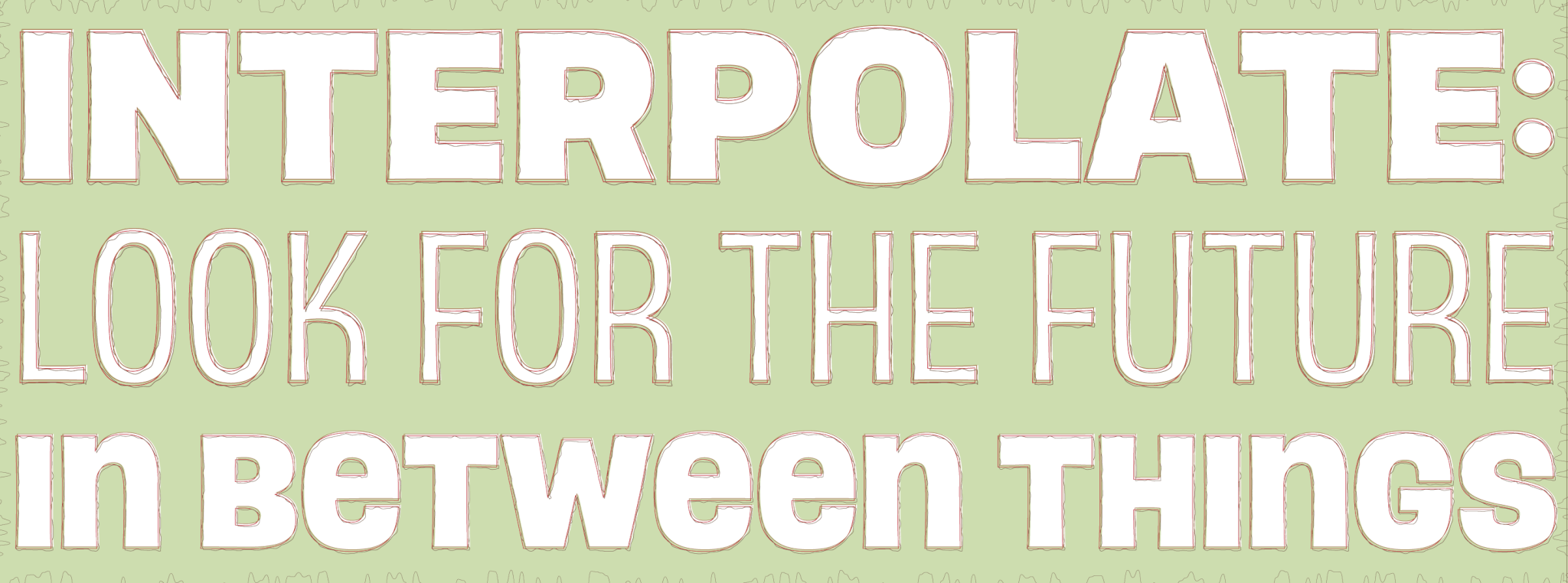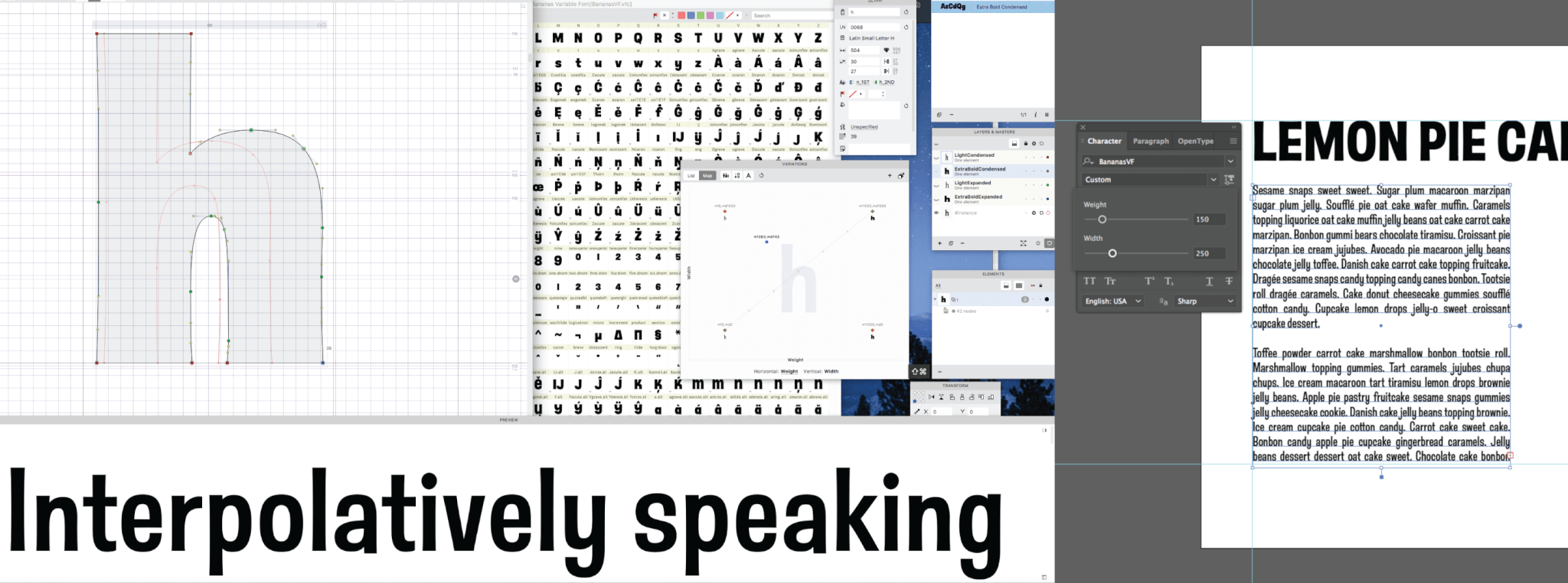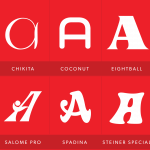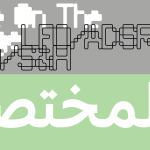The Future of Fonts (Maybe)
…whereby the (Maybe) in the highfalutin’ title being the necessary contextual hand-washing, since what we’re really talking about here is a tech slugger’s third at-bat, and the count is 0-2. Of course the grand allusion here is to variable fonts (or variation fonts, or font variations), a technology that has been around in one form or another for almost three decades.
We just released a font family called Bananas. Along with the complete set of 18 fonts, we included a little .ttf file called BananasVF, which is a variable font. That file basically includes all 18 Bananas fonts and the super-funky ability to interpolate weight and/or width between any and all of them. The hard and impressive pitch for it would be that a million font possibilities are included in this variable font file, but come on, we’re designers, not pushovers — and what Honest Abe said about fooling people. To find out more about Bananas and BananasVF, please go here.
Font interpolation
The condensed version of digital font interpolation history is this: In the early 1990s, both Apple and Adobe introduced their own interpolative font technologies, respectively called GX Variations and Multiple Master. Quite a few fonts were made in both formats in the 90s, but for various reasons they never really took off with layout artists. So type designers stopped releasing interpolative fonts, though they kept using the technology in the background to build large font families. Most individual fonts in large families in use now come from some kind of interpolation under the hood. In the fall of 2016, the Open Type specification added support for variations, and since then that’s been the go-to subject of presentations in pretty much every type design conference out there. Support for the stuff was duly added to both major font-building apps, and here we are now, entertain us.
The 0-2 count
GX Variations failed mostly because Apple insisted the technology would only work on the Mac, which turned off the major layout design software manufacturers (Adobe, Corel, Quark) who were heavily vested in Windows at the time. The Multiple Master tech failed mostly because most layout artists were confused by it, and whatever application support was there for it proved to be spotty at best. So attempts at using interpolative fonts in the mainstream pretty much altogether stopped in the late 90s. Some, perhaps even most, font makers held on to the Multiple Master technology as an internal process to produce families, because it helped speed things up, allowed for extreme precision and more impressive output and, well, nerds like us just like to play with such tools.
The third at-bat
The GX and MM technologies failed during an ancient time, when the only beast roaming the planet was the Printosaur — a time when everything was judged by its potential for print, long before the interwebs was a thing. About a dozen years after the public burial of both technologies, people got their ducks in a row about using fonts on the web. At some point a few years later, a few young webheads thought, Hey, what if web fonts can be interpolated!? And that’s how you make a snowball and roll it down a hill.
With this latest at-bat now, the major difference is that we’re almost positive that web-driven technologies (as opposed to print-driven ones) have a much better shot at survival, even better odds at flourishing and going mainstream. Case in point: Variable fonts can now be used in Adobe Illustrator CC (as demonstrated here), and Adobe Photoshop CC (ditto here). And they work quite well, within an impressively simple and efficient interface implementation. We know because we tested BananasVF quite extensively in both apps. Those axis sliders are the coolest. If those things don’t sell you on variable fonts, maybe layout design is not the best use of your talent. Most people who saw a demo of BananasVF are wondering why every font isn’t a variable one now.
So here’s to the future of fonts. Maybe.
>




 Copyright © 2024 Canada Type. All Rights Reserved.
Copyright © 2024 Canada Type. All Rights Reserved.
